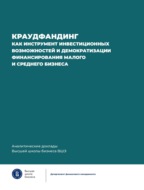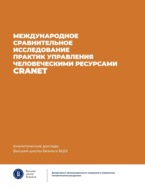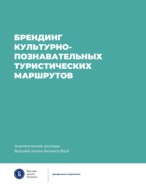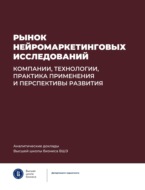Czytaj książkę: «Международное сравнительное исследование практик управления человеческими ресурсами CRANET»
Рекомендовано к изданию комиссией по издательской деятельности Высшей школы бизнеса НИУ ВШЭ
Рецензенты:
доктор социологических наук, заведующий кафедрой экономической социологии и менеджмента социологического факультета Московского государственного университета С.А. Барков;
управляющий директор Управления рынка труда и социального партнерства ООР «Российский союз промышленников и предпринимателей» М.В. Москвина
Авторский коллектив:
О. Баматтер-Родригес (подразд. 2.3), О.И. Зеленова (разд. 1, подразд. 2.1, 2.2), В.И. Кабалина (рук. авт. кол.; разд. 1, подразд. 2.2, 2.3, разд. 3), В.Р. Левин (подразд. 2.3), А.В. Макарова (подразд. 2.3), О.В. Мондрус (разд. 3), К.В. Решетникова (подразд. 2.2, 2.3), С.А. Татевосян (подразд. 2.3)
Под общей редакцией
С.Р. Филоновича
© Национальный исследовательский университет «Высшая школа экономики», 2025
* * *
Об аналитическом докладе
В первом разделе настоящего аналитического доклада освещается деятельность международной сети исследователей практик управления человеческими ресурсами CRANET (Cranfield Network on Comparative Human Resource Management), получившей название от Крэнфилдской школы менеджмента.
Во втором разделе представлены результаты российской части исследования начиная с 2008 г., когда Россия стала частью сети CRANET. Последовательно рассматриваются результаты трех волн исследования: 2008–2009, 2014–2015 и 2021–2022 гг. В силу различий в подходах к формированию выборок и их структуры сравнение результатов проводилось там, где было возможно. Но расширить сравнение нельзя по методологическим соображениям. Данные опросов в докладе приведены с той точностью, с которой возможно, а в некоторых случаях – необходимо.
В ноябре 2017 г. в Москве состоялась очередная встреча членов CRANET – представители исследовательских групп из Великобритании, Венгрии, Ирландии, Нидерландов, Греции приняли участие в 10-й ежегодной международной научной конференции «Современный менеджмент: проблемы, гипотезы, исследования», проводимой Школой бизнеса и делового администрирования факультета бизнеса и менеджмента НИУ ВШЭ. Координатор сети, профессор Крэнфилдской школы менеджмента Эмма Пэрри (Emma Parry) представила результаты международного сравнения данных опроса 2014–2015 гг., которые учтены авторами доклада при обсуждении российских практик управления человеческими ресурсами (УЧР).
В третьем разделе доклада впервые в истории CRANET проанализирована деятельность сети как пример организации совместной научной работы с точки зрения создания ценности для самой сети и ее участников – институциональных и индивидуальных исследователей.
Авторский коллектив аналитического доклада объединяет как опытных исследователей (О.И. Зеленова, В.И. Кабалина, К.В. Решетникова), которые начиная с 2008 г. участвовали в организации и проведении российской части исследования, так и молодых ученых, аспирантов, студентов магистратуры и бакалавриата НИУ ВШЭ.
Благодарим участников первой исследовательской группы под руководством И.Б. Гуркова, успешно осуществивших научный проект «Проведение российской части международного исследования практик управления персоналом CRANET» при поддержке Научного фонда ГУ ВШЭ в 2008–2009 гг.
В 2014–2015 гг. вторую волну исследования CRANET проводила научная учебная группа сравнительных исследований практик УЧР под руководством В.И. Кабалиной, созданная по результатам конкурса программы «Научный фонд НИУ ВШЭ». В состав группы также входили студенты магистерской программы «Управление человеческими ресурсами».
В 2021–2022 гг. третья волна исследования была реализована в рамках проекта фундаментальных исследований «Современные практики УЧР на основе международного исследования CRANET» Высшей школы бизнеса НИУ ВШЭ, в котором приняли участие аспиранты А.С. Осипова, О.И. Вершинина, С.А. Татевосян, В.Р. Левин, студентка магистерской программы «HR-аналитика» А.В. Макарова и студентка образовательной программы бакалавриата «Управление бизнесом» О. Баматтер-Родригес.
Результаты российской части исследований CRANET легли в основу научных публикаций и докладов1. Данные международного опроса CRANET 2014–2015 гг. были проанализированы и использованы О.В. Мондрус в диссертации на соискание степени кандидата наук по менеджменту. Ряд студентов бакалавриата и магистратуры использовали данные CRANET в своих выпускных квалификационных работах.
Благодарим всех анонимных респондентов, руководителей и специалистов служб УЧР компаний, которые приняли участие в опросах CRANET в России в 2008–2009, 2014–2015 и 2021–2022 гг.
Материалы аналитического доклада будут полезны тем, кто занимается планированием международных, межрегиональных и сравнительных исследований в целом, исследователям практик УЧР в России, HR-специалистам и представителям бизнеса, интересующимся трендами в управлении людьми в российских компаниях.
Executive summary
The CRANET project is a unique phenomenon for the scientific and professional community in the field of human resource management. It exists in the form of a network of scientists from more than 40 countries. Its implementation over the course of 35 years testifies to the successful solution of a number of methodological and organizational issues inherent in international comparative research. In particular, the issue of sampling in countries with different economic structures and economic sizes, the development of a common questionnaire for all countries, and the coordination of the process of data collection and analysis. This report is the first to analyze the activities of the CRANET network as an example of organizing collaborative scientific work from the point of view of creating value for the network itself and its participants – universities and researchers.
A team of researchers from the Higher School of Economics, representing Russia in the project, took part in three waves of the study: 2008–2009, 2014–2015 and 2021–2022. In the analytical report they are considered sequentially, with a separate subsection devoted to each of the waves. Due to differences in approaches to compiling samples of companies, comparisons of the results of the survey waves were carried out where possible. Also, survey data in the report is presented as accurately as possible, and in some cases, necessary. It is worth noting a common feature across all three waves of the study. Its results reflect an objective picture of the state of human resource management in Russian companies at a certain point in time. The objectivity of the information presented is due to the fact that the survey respondents were HR directors and heads of human resources services of companies and organizations. They gave answers to the survey questions that did not involve value judgments and required reference to accurate data and facts.
The 2008–2009 study was conducted on a sample of predominantly small and medium-sized companies (almost 84 % of companies; the total number of companies surveyed was 56). Perhaps for this reason, a number of characteristics of the HRM system in Russian companies (primarily the low share of personnel costs in operating costs and the leading role of line management in basic HRM issues) were close to those existing in companies in Eastern European countries. However, the status of heads of HRM services in the management hierarchy in Russia was higher than in most countries of Eastern Europe, with the exception of the Czech Republic and Slovenia.
Notable features of human resource management in Russian companies were the high degree of use of various flexible forms of employment (primarily fixed-term contracts and casual employment) and the low formalization of the personnel assessment system. The degree of coverage of companies with formalized personnel assessment systems in Russia turned out to be lower than in any country included in the CRANET study. This provided line managers with additional opportunities to influence subordinates.
Freezing ruble wages and reducing the number of personnel has become the main ways to reduce operating costs in a significant proportion of organizations. Most often, employee incomes were cut due to the variable (bonus) part and bonuses, although salaries in their “grey” part were also reduced. Line managers used “squeezing out” of employees by transferring them to a lower level of pay (without bonuses and additional payments). Large companies resorted to massive staff reductions or announced such plans in order to obtain government support funds.
The results of the Russian part of the survey in 2014–2015 reflected the state of human resource management mainly in large companies, which dominated the sample (68 % of companies; the total number of surveyed companies was 131). Notable features of the Russian human resource management system at that time were the high degree of structuring and formalization of HRM processes (having a documented HRM strategy was already becoming the norm); the involvement (in one way or another) of HR directors in developing the company’s strategy, but they were rarely members of senior management bodies.
An analysis of the distribution of responsibility for decisions in the field of human resource management between the personnel service and line managers did not show in this wave of research the predominance of the role of line managers, as was the case in the 2008–2009 wave. For most issues, HR managers took primary responsibility, albeit subject to consultation with line managers, including in matters of personnel regulation. Only issues of personnel incentives remained the prerogative of line managers.
The main functions of HRM in general in the countries studied were implemented by companies independently. The tendency to attract external service providers (outsourcing) for training and development of personnel has been observed in European countries, including Russia.
In Russian companies, the leading method of recruiting managers was internal hiring. Internal recruitment, employee referrals, and posting vacancies on job search sites were used almost equally to recruit specialists. To find employees and workers, the first place was the method of posting vacancies in the media. All countries in the study noted the use of social networks to find and evaluate candidates.
In personnel training, a common trend across all countries, with a wide range of training and development methods used, has been the predominance of on-the-job training. In Russian companies, the second most popular area was personnel reserve programs, talent development and mentoring, and the least used practice was international assignments, coaching and development centers (which were widespread abroad).
Across all study countries, the vast majority of organizations used assessment of training results to determine their training needs and make important training and development decisions. And in this sense, Russian companies were not alien to modern trends, although they used qualitative indicators much more often than quantitative ones.
The results of the study showed that remuneration practices in companies were quite diverse, but financial participation schemes were used to a limited extent, i.e. a small proportion of companies in most countries. Russian companies widely used the practice of performance-based pay and bonuses for individual achievements; executive bonuses were linked to the achievement of organizational goals.
It is worth eliminating the variability in the use of additional social benefits by companies in different countries, which reflected the characteristics of national social security systems and the capabilities of companies. The most popular corporate benefits in Russia were additional medical insurance, maternity leave at the birth of a child, and educational leave.
Despite the low level of unionization of company employees in most countries of the study, it was noted that trade unions still have some influence on organizations, including in Russia.
Another common trend across most countries in the study was that communication through the line manager was the most widely used form of internal communication, both top-down and bottom-up. Internal corporate communications in Russia, in addition, are characterized by the predominance of information flows in the “top-down” direction.
Diagnosis of the state of HRM practices used by Russian companies in 2021–2022 took place, as in previous waves of research, under the conditions of a difficult socio-economic situation, this time caused by the COVID-19 pandemic. The sample covered 367 companies, which were mostly medium-sized companies (77.1 %). At the initiative of the Russian research group, the questionnaire included questions about the presence of formalized corporate values in the organization and the use of digital technologies in the implementation of a number of HRM functions.
Despite the fact that the share of companies with formal written documents (strategies or regulations on HRM practices) was at an average level, in the range of 44–64 %, many companies noted the presence of formulated corporate values, among which the most popular were values related to professional employee characteristics.
Outsourcing is becoming a common way to reduce HR costs and streamline processes. At the same time, medium-sized companies and some large companies resort to it more often (for individual practices), while small organizations are less likely to choose this type of optimization due to the small amount of suitable work.
An important direction in the development of HRM practices has been the digitalization of processes. The greatest spread of digital technologies is noted in such functions as the organization of remuneration, personnel training and internal communications.
When hiring personnel, companies differentiate methods for managers and specialists and for workers and employees. For managers and specialists, recruiting through recommendations, internal hiring and rotation is more common, and interviews (one-on-one and panel), collection of recommendations and professional tests are more often used for selection. In relation to workers and employees, recruiting is more often used through advertisements on aggregator sites, the website of the organization itself and in the media, and the most popular selection methods are professional tests, individual interviews and collection of reviews.
The survey results indicate that companies often centrally determine base salaries at the organization/division level, but use an individual approach to determine the level of base salaries for managers, and also refer to concluded tariff agreements as the main benchmarks for all categories of personnel.
The vast majority of companies provide employees with additional social benefits, most often maternity leave for the birth of a child and educational leave.
The low level of employee membership in trade union organizations determines the weak influence of trade unions on the activities of organizations. This is confirmed by the fact that employees resolve labor issues not through trade unions, but in other ways, primarily through their immediate supervisor.
In most companies, managers and specialists are more knowledgeable about such aspects of the company’s activities as business strategy, financial performance and work organization than employees and workers.
In intra-company communication, informing employees (top-down communication) is more developed than receiving feedback (bottom-up communication). At the same time, the most common channel in both directions is communication through the immediate supervisor.
The portrait of an HR service employee, compiled on the basis of a block of the questionnaire with information about the respondent, includes such characteristics as being female, having a higher education and a diploma in economics or business and management, work experience in the field of personnel management up to 5 years (for an HR specialist) and up to 10 years (for an HR director). The portraits of a specialist and a director of an HRM service overlap in general terms, however, HR directors, as a rule, work in the organization longer than HR specialists and have higher or additional education in the field of personnel management.
An examination of the CRANET research network’s performance from 1991 to 2021 through the lens of its value creation, as measured by the number of citations to articles published by its members in leading journals, revealed the following.
Valuable, i.e. potentially receiving a large number of citations are both comparative and country-specific studies based on data from one wave or several waves, conducted in collaboration with researchers from different universities and countries or teams of researchers from the same country. Each network node is important for the formation of the result of the activity. Each researcher, team, university, country, as a participant in the CRANET network, is able to contribute to the value of the network, which is manifested in achieving the network effect inherent only in this type of collaboration. The network effect implies non-linearity in the growth of the value of the network, in this case limited by definition by the number of citations.
We were able to establish that a nonlinear effect in citations is present, and the shape of the network’s accumulated value curve supposedly has a quadratic relationship, comparable to the growth dynamics of university collaborations in the CRANET network. Verification of the identified relationship opens up prospects for developing a network value model formed on the basis of research collaborations.
Gurkov I., Zelenova O. Managing Human Resources in Russia // Managing Human Resources in Central and Eastern Europe. London: Routledge, 2009. DOI 10.4324/9780203886335-16;
Gurkov I., Zelenova O. Human resource management in Russian Companies // International Studies of Management and Organization. 2011. Vol. 41. Iss. 4. P. 65–78. DOI 10.2753/IMO0020-8825410404;
Gurkov I., Zelenova O, Saidov Z. Mutation of HRM practices in Russia: an application of CRANET methodology // The International Journal of Human Resource Management. 2012. Vol. 23. Iss. 7. P. 1289–1302. DOI 10.1080/09585192.2011.581633;
Зеленова О.И., Решетникова К.В. Развитие систем управления человеческими ресурсами в российских бизнес-организациях (по итогам российской части международного исследования УЧР CRANET в 2008 и 2014 гг.) // XVI Апрельская международная научная конференция по проблемам развития экономики и общества: в 4 кн. Кн. 3. М.: Изд. дом Высшей школы экономики, 2016. С. 453–463;
Kabalina V., Zelenova O., Reshetnikova K. Contemporary Human Resource Management Practices in Russia: Flexibility under Uncertainty // International Studies of Management and Organization. 2019. Vol. 49. Iss. 4. P. 422–440. DOI 10.1080/00208825.2019.1646490;
Кабалина В.И., Зеленова О.И., Решетникова К.В. Современные практики управления человеческими ресурсами в российских компаниях (итоги российской части международного исследования CRANET 2014–2015) // Социология и общество: традиции и инновации в социальном развитии регионов: сборник докладов VI Всероссийского социологического конгресса (Тюмень, 14–16 октября 2020 г.). М.: РОС; ФНИСЦ РАН. 2020. С. 2497–2508. DOI 10.19181/kongress.2020.302;
Kabalina V., Zelenova O., Reshetnikova K. Contemporary Human Resource Management Practices in Russia: Flexibility under Uncertainty // Comparative Human Resource Management. London: Routledge, 2021. P. 82–100. DOI 10.4324/9781003168461-6;
Morley M.J., Kohort A., Poór J., Kazlauskaitė R., Kabalina V., Blštáková J. Human Resource Management in the Postsocialist Region of Central and Eastern Europe // The Oxford Handbook of Contextual Approaches to Human Resource Management. Oxford: Oxford University Press, 2021. P. 239–264. DOI 10.1093/oxfordhb/9780190861162.013.11.
Darmowy fragment się skończył.






